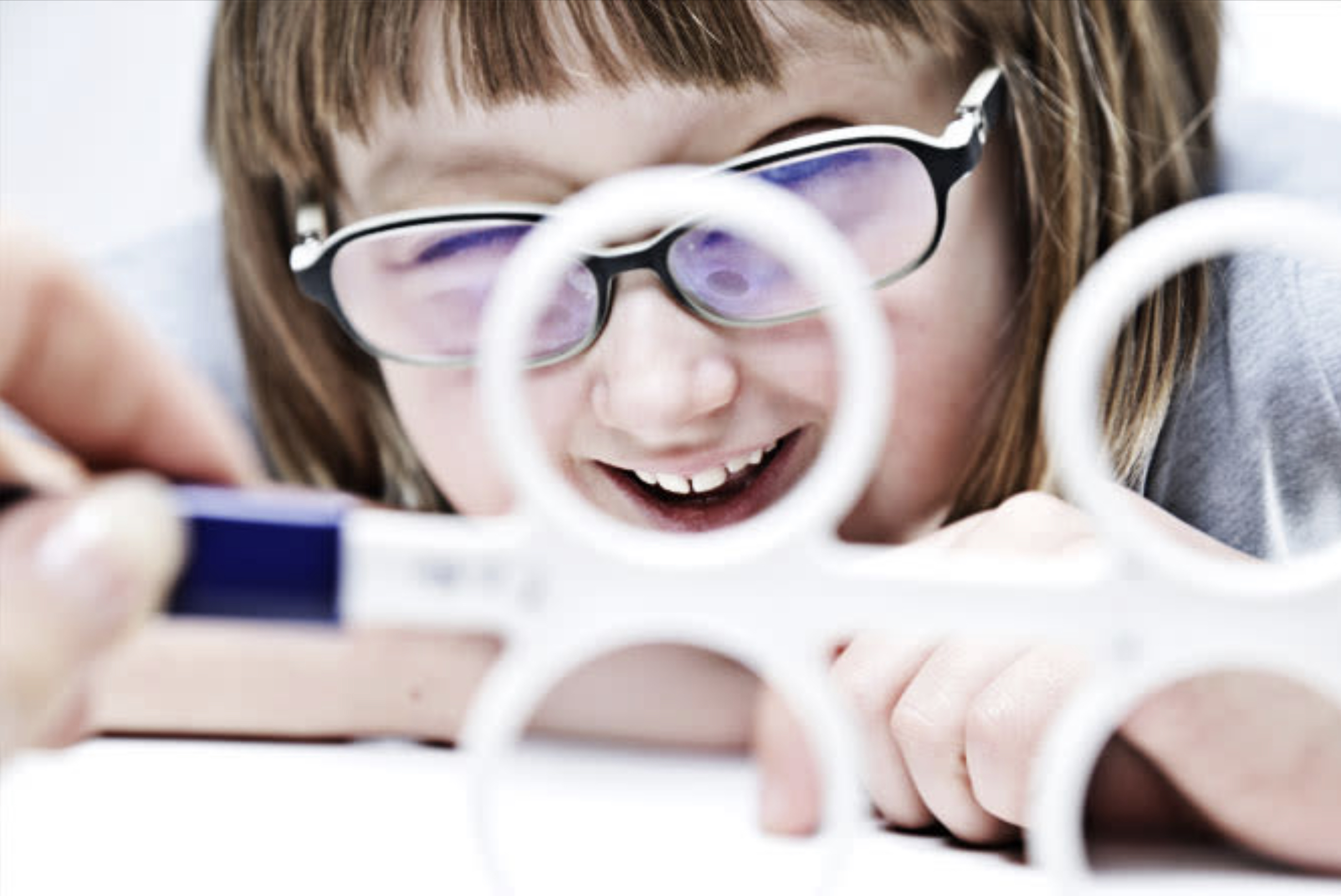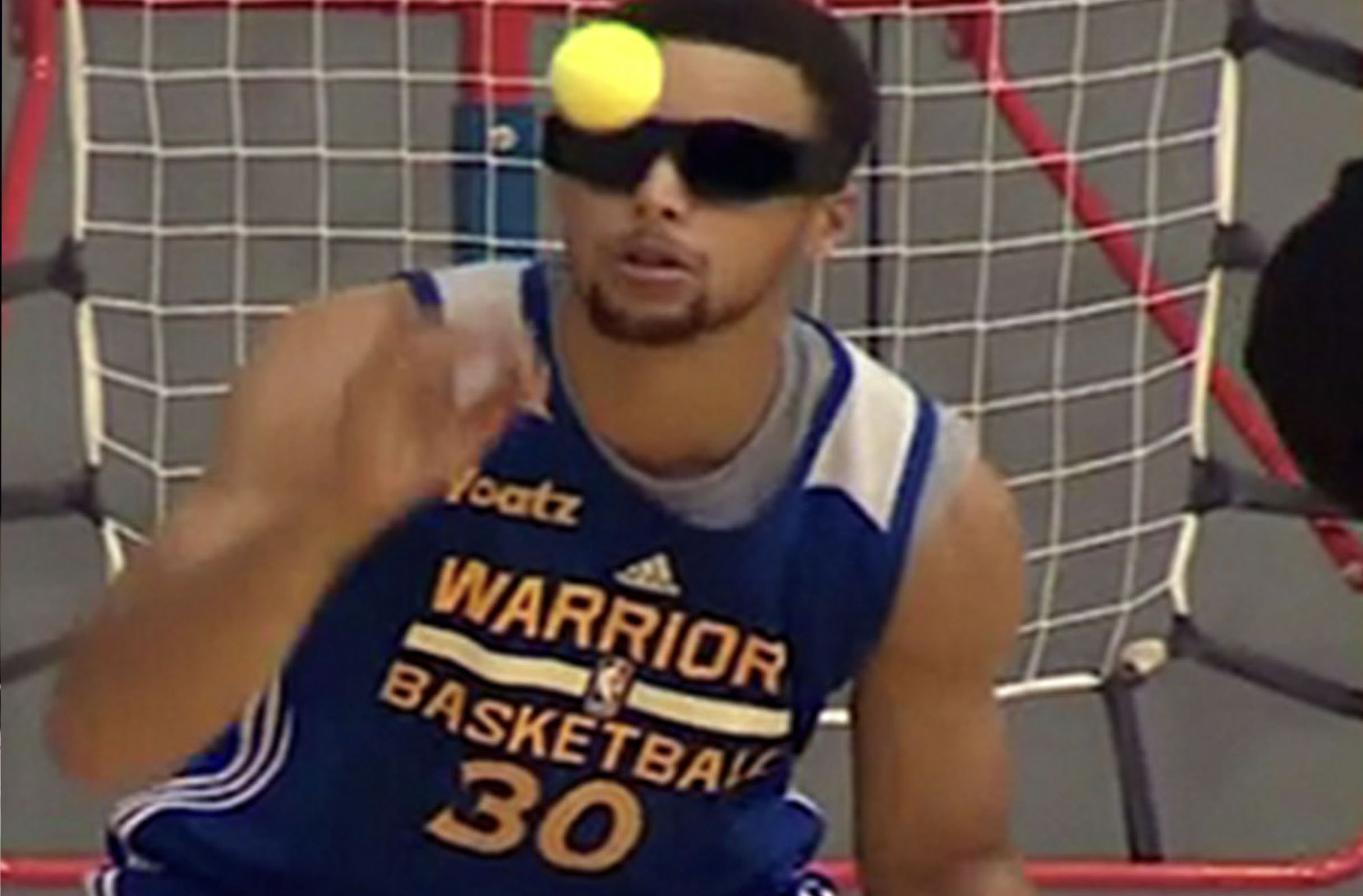A typical vision therapy session will include exercises that make use of lenses, filters, prisms, occluders, and computer devices aimed at developing visual and information processing skills.
Vision therapy (VT) works based off of the scientific principles of neuroplasticity. Neuroplasticity is the ability of neurons in the brain to change their connections and behaviors in response to new environments. This means that neuroplasticity allows you to create neural pathways every time you learn or do something new.
For example, an eye that is amblyopic (or “lazy”) is receiving imbalanced visual input compared to the stronger eye, which can lead to imbalanced neural processing and visual deficits. VT works on strengthening the neural connections between the brain and the eyes by creating new visual environments for the brain to develop new neural connections. The more we perform these activities, the more intrinsic these new neurological pathways become.
VT sessions are usually 45 minutes long once per week in office, with 10-15 minutes of assigned daily exercises to be done at home. A VT program usually lasts a minimum of 3 months to 6 months depending on the diagnosis and patient compliance.
For Children
Vision therapy can significantly benefit children by improving visual skills essential for learning, such as eye tracking, focusing, and coordination. According to the American Optometric Association (AOA), up to 80% of a child’s learning is dependent on the visual system. Additionally, one in four children has a vision problem significant enough to hinder their ability to learn effectively. Through tailored vision therapy, children can strengthen these skills, enhancing both their academic performance and overall development.
For Adults
Vision therapy can be life-changing for adults, as the brain retains the ability to rewire and adapt throughout life, a concept known as neuroplasticity. As Dr. Norman Doidge, a leading expert on neuroplasticity, says, "The brain is not fixed; it’s adaptable and can change even in adulthood." We treat adults with a range of vision problems, including amblyopia, brain injuries, dizziness and balance disorders, and digital eye strain. Vision therapy helps retrain the brain and visual system to work more efficiently together, enhancing visual function and overall quality of life.
For Brain injury and Concussion
Patients recovering from concussions, brain injuries, or strokes often face a range of visual symptoms, including double vision (diplopia), dizziness, visual midline shift, visual field deficits, eye strain, light sensitivity, and challenges with depth perception. Research indicates that up to 80% of brain injury patients experience vision-related issues. Vision therapy is vital in the rehabilitation process, aiding in the restoration of visual function and enhancing overall quality of life by retraining the brain and eyes to work together more effectively.
For Sports Performance Enhancement
Vision is essential for athletes, as it provides the sensory information the brain relies on to guide motor responses. In sports, every action follows a key sequence: Vision → Cognition → Action. Athletes with advanced visual skills—such as faster reaction times, sharper depth perception, and better peripheral awareness—gain a noticeable edge in performance. Research has shown that elite athletes consistently excel in sports vision tasks, emphasizing the critical role vision plays in reaching peak athletic performance.
Frequently Asked Questions
The following are signs your child might need vision therapy:
- Skips lines while reading, rereads lines or uses a finger to maintain place
- Avoids close work
- Holds reading material closer than normal
- Rubs eyes frequently
- Complains of headaches
- Squints or closes one eye; tilts head to one side
- Exhibits poor reading comprehension
- Requires extra time to complete homework
- Reverses letters when reading, such as b’s and d’s
- Demonstrates a short attention span with reading and schoolwork
- Exhibits difficulty in focusing, visual tracking (following an object), or alignment and moving of the eyes after 6 months of age
- Displays chronic redness or tearing of the eyes
Yes! Vision therapy has been proven effective for improving many binocular vision conditions.
The Convergence Insufficiency Treatment Trial (CITT) showed that office-based vision therapy is an effective treatment for common vision disorders. In addition, numerous published research studies prove the effectiveness of vision therapy for improving reading and learning performance as well as neuro rehab and improved performance. See research tab.
Ideally the benefits of vision therapy will last a lifetime – however, sometimes maintenance sessions are needed. It’s similar to learning to ride a bike or learning to swim–you never really lose that skill.
Focusing and eye coordination should operate effortlessly when trained and maintained appropriately. At the end of each therapy program, activities for home practice are prescribed for reinforcement and self-monitoring.
Vision therapy enables the development and recovery of strong visual skills that will prepare you for a lifetime of learning as well as provide new opportunities for many adults.
The visual system includes the brain and the eyes— the eyes are actually physical extensions of the brain. A common misconception is that patients in vision therapy have “weak eye muscles.” A more accurate way to describe what we do in VT is to strengthen the brain’s control of the eye muscles and provide visual experiences that allow for more efficient information processing.
You can think of Vision as having hardware and a software components just like a computer. The eyes and eye movements are the hardware. They’re physical – they move, they focus and they collect visual information. The brain is the software, there’s where the complex procession happens and the information provided by the hardware turns into vision.
That’s what makes vision and vision development so unique. If there’s a problem with any component the entire system won’t work as efficiently. Rarely do we treat only one of those components since they’re so intertwined. In fact, vision therapy evaluations and sessions may focus on certain deficiencies specifically, but we always incorporate activities to make sure the system is “running on all cylinders.”
No, actually vision therapy and training has been around for centuries.
Although vision therapy is currently an optometric specialty, it is actually an outgrowth of orthoptics, which was introduced in the late 1800’s with exercises to align the eyes.
As doctors became more focused on eyeglasses, medication, and surgery, the benefits of orthoptics were taught to fewer and fewer practitioners. However, in the mid 1950’s optometrists once again began to study orthoptics and pioneered the development of vision therapy.
Today vision therapy is performed all over the world in order to treat and help individuals with vision disorders. We have double blind multi center trials and studies showing efficacy and benefits of in-office vision therapy.
We do not diagnose or treat dyslexia or learning disabilities directly.
We treat the visual conditions that can commonly be found in children with dyslexia and learning disabilities. When a child struggles with reading and learning, it is imperative to rule out the possibility of a vision problem. If there is a vision problem, treatment may include vision therapy. Once the vision problem is treated, tutoring and other services to address the learning disability becomes much more effective.
- Improved reading and learning ability
- Improved eye hand coordination and sports performance
- Reduced fatigue and headaches associated with reading
- Improved self-esteem and confidence
- Improve quality of life after stroke or concussion.
- Improved visual skills including eye focusing, eye tracking, eye teaming, working memory, motor planning, visual sequencing, motion processing.




